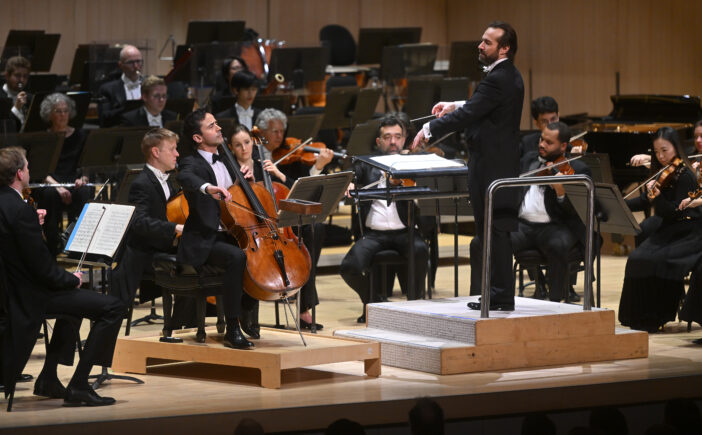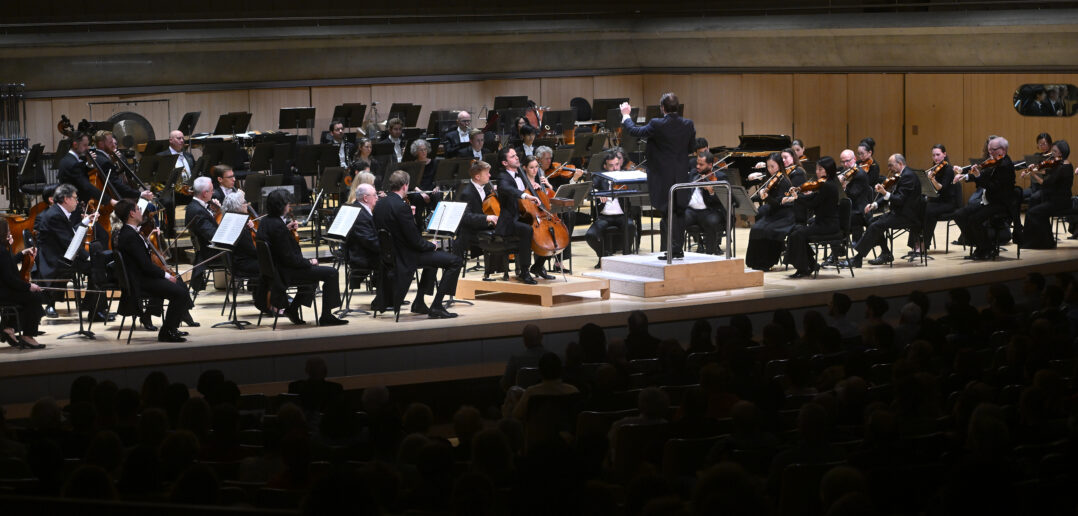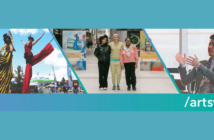The TSO’s prominence on the global concert stage continues to surge. The April 26 concert featured French conductor Fabien Gabel, French/Canadian-born cellist Jean-Guihen Queyras, and the North American premiere of contemporary French composer Camille Pepin’s latest work, Laniakea. Judging from the lack of empty seats at Roy Thompson Hall, the message has gained momentum: classical music is alive and well when the programming and performers are stellar.
Fresh from his debut in Chicago barely a few days ago, Fabien Gabel’s TSO debut opened with the fanfare of Camille Pepin’s Laniakea. Tonal orchestration is accessible. It paints images, through harmony and repetition, of clusters within the heavens, drawing on French and American influences. Her distinctive style clusters layered lines formed of pizzicati, with sustained lyricism. Shoutout to the strings for driving the distinctive rhythmic articulation.
Next followed two works by Tchaikovsky: the Variations on a Rococo Theme and the Andante Cantabile for Cello and String Orchestra. The first was inspired by Mozart, the second by a Ukrainian folk tune. Both enabled Queyras to display his ease and facility with the instrument. Tchaikovsky collaborated with the cellist to whom it was dedicated when composing the Rococo Variations. The result explores the beauty of the instrument that poses no technical challenges to Queyras, such as facility with the thumb position. It seems like fun and games for Queyras. He maneuvered so easily in the upper register of the cello, like an acrobat, and equally to portray the emotional depth of the Cantabile with poignancy. Shout out to the expertise of TSO’s cello section for their coherence with the soloist.

Photo: JAG Photography
For those fortunate enough to livestream today’s dress rehearsal, the opportunity to engage with the TSO as part of the educational collaboration with the Toronto district school boards provided an opportunity to meet the youngest cellist during the break. Lucy Ticho is a star ambassador for the Orchestra and indeed, the profession. Radiating exuberance, love of her craft and colleagues, and passion to educate, she responded with pride to questions posed on live chat by high school students about music, the orchestra, and balance in life. What an inspiration!

Photo: JAG Photography
The second half of the program featured Stravinsky’s Song of the Nightingale (Le Chant du Rossignol) and Maurice Ravel’s Suite NO. 2 from Daphnis et Chloe. Stravinsky’s visionary comment on the tussle for primacy between nature (the song of the nightingale) and artifice (mechanical inventions) could be a metaphor for the tussle between humans and AI. Although Stravinsky confessed in his autobiography that he preferred mechanical invention, in his composition, it is the Nightingale, nature, that cured the emperor.
As fanfare began the program, so it ended with the ringing orchestration of Ravel’s heartwarming symphonic tone poem, which is scored for no fewer than 4 trumpets. Gabel himself played the trumpet and came from a French musical family in which his father played the trumpet and his mother the harp. The connection between Gabel and French music, and between conductor and cello soloist, and between both with the orchestra, imbued the evening with the sounds of warmth and collaboration. Shout out to the winds, brass, and violins.

Photo: JAG Photography
It was an evening that celebrated French music – conductor, composer, and soloist – well worth commemorating the diversity of Toronto.















